Trigger warning: disordered eating and sexual assault
Flick through any Vogue, watch any Dior perfume commercial, glance at any Gucci billboard and they will all tell you the same thing: sex sells. The first instant of sexualising models in order to sell a product was as early as 1871, featuring a caricature of a semi-nude female surrounded by water for a Pearl Tobacco campaign. Nowadays, the frequency of objectifying and modifying models to promote luxury fashion brands has almost become mundane.
Let’s take a look at Dolce & Gabbana’s 2007 ad campaign for example. Do you see high fashion here? Exquisitely constructed garments? Luxury leather stilettos? No: this is a simulated gang rape utilised to sell a brand. This controversial ad, showing a woman ‘immobilised and subjected to a man’s will’ was banned by the Advertising Self-Discipline Institute.
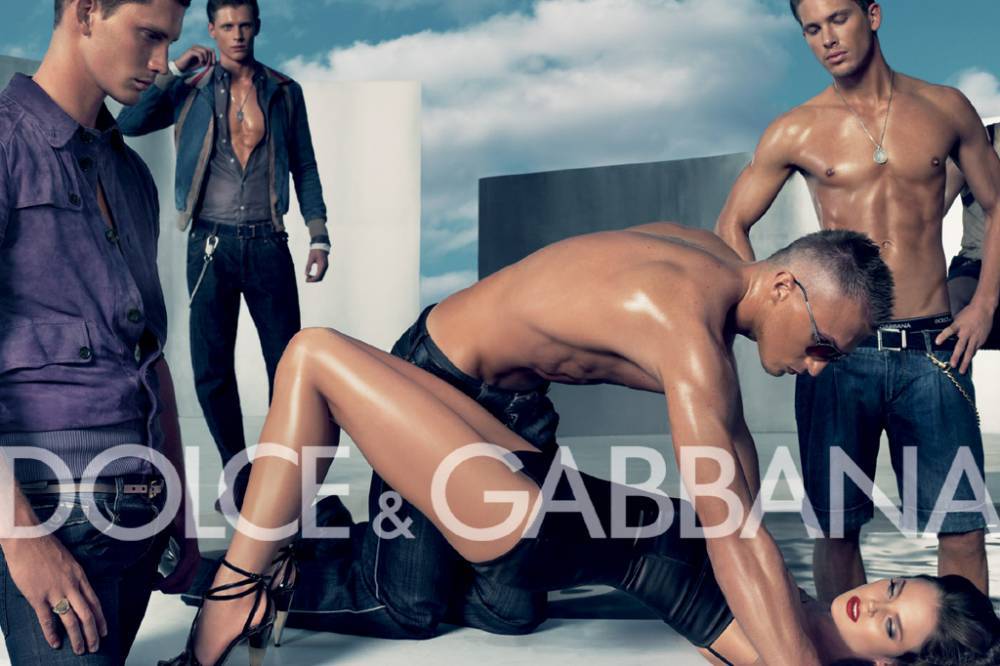 https://metrouk2.files.wordpress.com/2015/03/ad_163261088.jpg?quality=80&strip=all&strip=all
https://metrouk2.files.wordpress.com/2015/03/ad_163261088.jpg?quality=80&strip=all&strip=all
Just a year earlier, Jimmy Choo released his ad for his spring/summer collection. Surely, you say, a collation of floral backgrounds, or perhaps a romantic coastal location? Maybe a compilation of bright textures to promote his designs? Not quite. How about a young blonde woman’s dead body crammed into the back of a limousine whilst Quincy Jones holds a spade? Yes, much better.
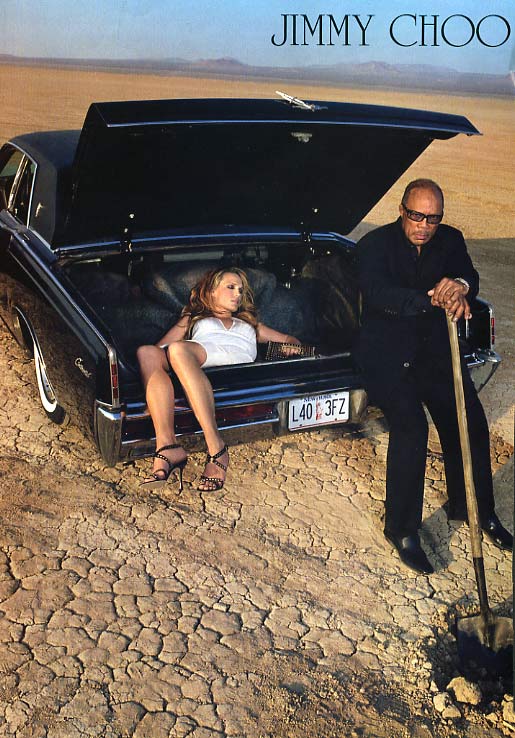 http://copyranter.blogspot.co.uk/2006/08/jimmy-choo-shoes-to-die-for.html
http://copyranter.blogspot.co.uk/2006/08/jimmy-choo-shoes-to-die-for.html
In both of these adverts, the woman is subdued, restrained, and is a clear victim of violent behaviour initiated by males. Whilst it perhaps comes as no surprise that women are depicted as delicate, beautiful and oppressed creatures, as often explored in popular music and television culture, this has dangerously become the fashion norm. If Tesco released an advert showing rape or murder, would that be acceptable? Broadcasted worldwide? My guess is no. Yet high fashion is celebrated for its innovative and inimitable method of advertising and marketing. The fashion industry is worth a near $300 trillion- that’s a hell of a lot of Louis Vuitton handbags. With that kind of power and influence, what designers want- designers get.
Men can also be portrayed in a sexualised manner. Semi or completely nude physiques of incredible defined models are often plastered across billboards and magazines. Calvin Klein, for example, is notorious for his range of distinctive underwear collections, and for his use of borderline pornographic photographs of male models with ‘ripped’ torsos. American actor Mark Walberg posed for Calvin in 1992, wearing little more than a pair of (slightly too small) white briefs whilst grabbing his genitals. His facial expression and direct gaze into the camera lens immediately shows us the difference between men and women’s portrayals in advertising.
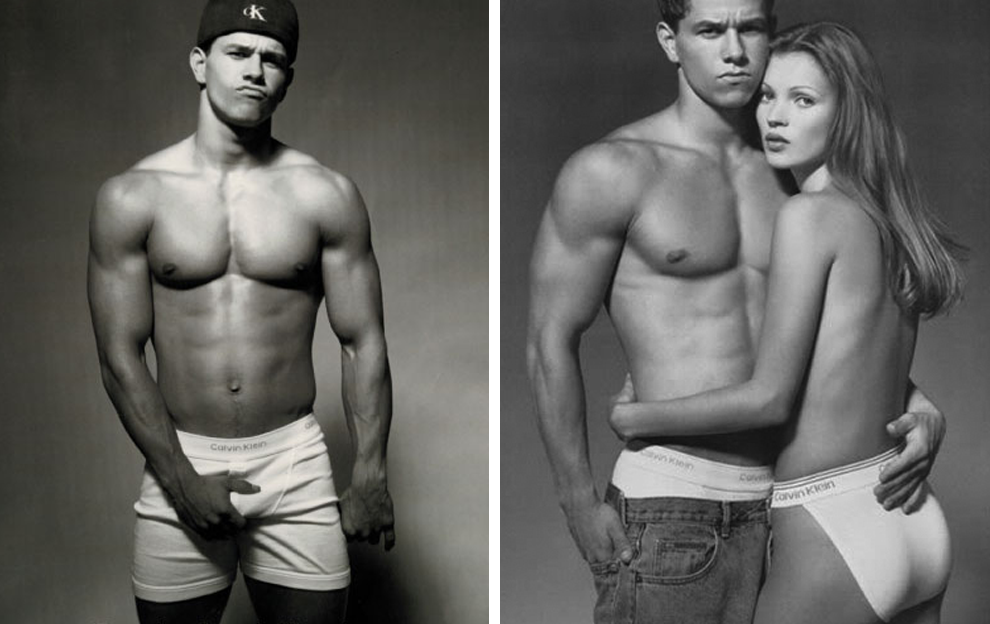
http://www.bangandstrike.com/bangtalk/wp-content/uploads/2014/09/Calvin-Klein-1990-Mark-and-Kate.png
Women often look away from the camera: absent-minded and delicate. In using this technique, women become objects: pretty things for men to look at. Men, however, are dominant and masculine- they are sexual deviants who seduce beautiful women just because they can (whilst modelling some excellent underwear of course).
However, some radical advertising has proved that not all fashion photographs are sexist and pro size zero. Using controversial and graphic images can also be very effective in creating awareness of issues created by the fashion industry.
Take the Italian brand No-l-ita, for example. In 2007 they shot a severely anorexic ex-model to warn young fashion enthusiasts about the dangers of dieting to look like your favourite celebrity.
Although shocking to look at, photographer Oliviero Toscani presents a powerful image indeed. By using a nude model in a non-sexualised way, consumers see the human body in a different light entirely, and not just because of different editing techniques.
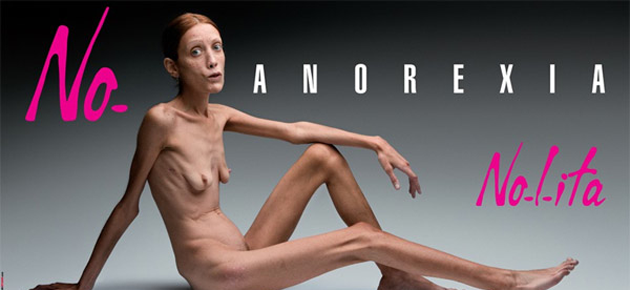 http://noragouma.com/wp-content/uploads/2013/05/nolita_anorexia.png
http://noragouma.com/wp-content/uploads/2013/05/nolita_anorexia.png
In 2015 Deisel also showed how our idea of a high brand supermodel isn’t what it was 50 years ago. Model and activist Winnie Harlow suffers from severe vitiligo, and so by incorporating Harlow into the image, Diesel brings to life the idea of diversity and equality in a conformist and a very white, very Western dominated fashion world.
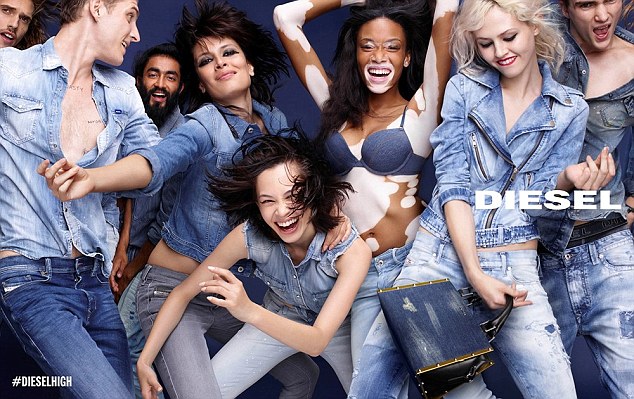 http://i.dailymail.co.uk/i/pix/2015/02/03/254D92E100000578-2937873-image-a-41_1422977266892.jpg
http://i.dailymail.co.uk/i/pix/2015/02/03/254D92E100000578-2937873-image-a-41_1422977266892.jpg
So there you have it: the highs and lows of how expert advertisers use fashion to shock, scare, encourage, sexualise, and sell us their brands. Is the fashion industry destined to be superficial and sexist, or spearheaded and skilful? You decide.
Text by Megan Handley
